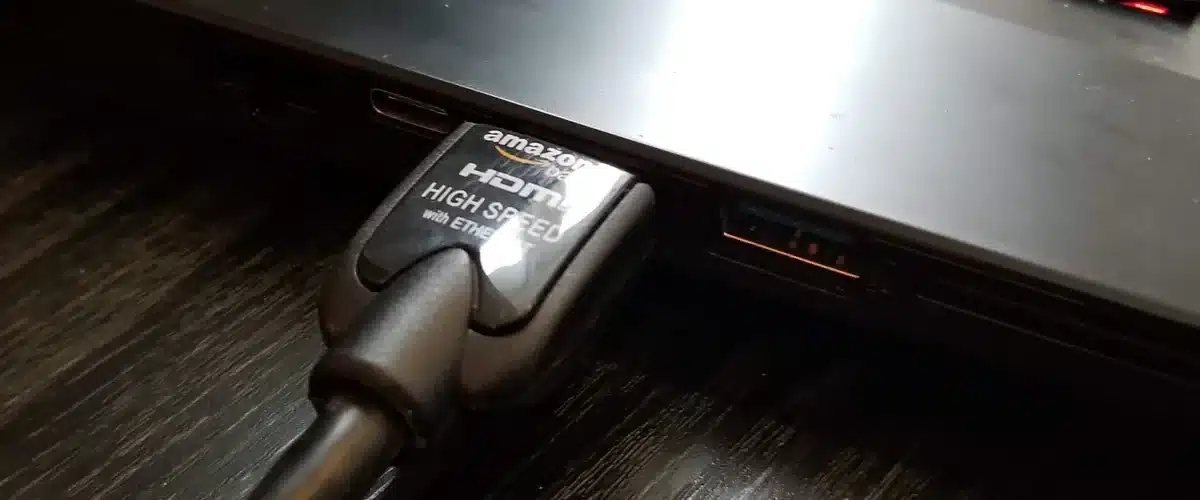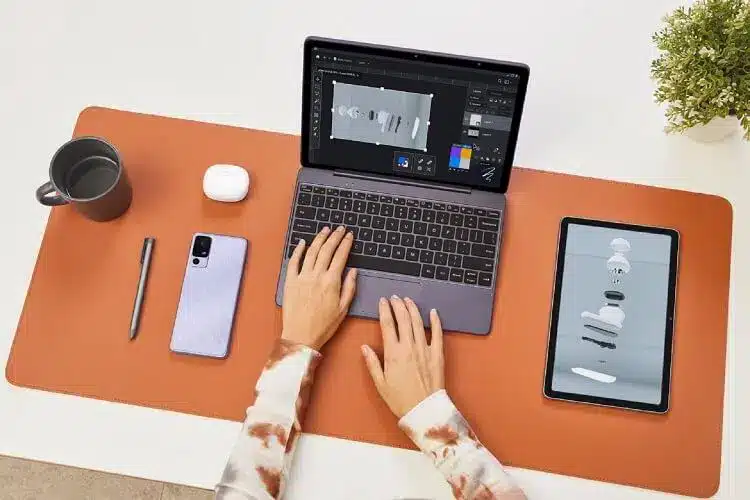Table of Contents
How To Connect Laptop To TV With USB To HDMI Wirelessly?
How To Connect Laptop To TV With USB To HDMI Wirelessly? If wires aren’t your thing and you want to go wireless, there are several options. From tried-and-true HDMI cables to new screen-casting tools like Google Chromecast or the built-in Windows 10 screen-sharing tool based on Miracast, there are plenty of ways to get your laptop’s screen displayed on a TV.
1. HDMI Cable:
If you want to view a slideshow of vacation photos on the big screen or watch a movie, you can use an HDMI cable to connect your laptop to the TV. But that isn’t the only option, thanks to new wireless methods that let you skip the cables altogether.
There are several ways to connect a laptop to a TV without wires, including Google Chromecast and the screen-sharing tool that comes with Windows 10, based on Miracast technology. However, you must make sure that both your laptop and TV support the same technology to use these options.
A full-sized HDMI output is found on nearly all modern TVs, monitors, and game consoles. It provides a single, unified cable for audio and video, with data rates up to 48Gbps. It is the most common method for connecting laptops to a TV.
To use this method, plug a standard HDMI cable into your laptop’s HDMI port and the other end into an open HDMI input on your TV. You can find this port labeled as HDMI 1, HDMI 2, or HDMI 3. Then power up both the TV and your laptop. Select the correct input on your TV and select either “Duplicate” or “Extend” in your computer’s display settings to begin displaying your laptop screen on the TV. You can also adjust the screen resolution if needed in the Display settings on Windows or System Preferences on Mac.
2. USB-C to HDMI Adapter:
There are several ways you can connect your laptop to your TV wirelessly, including using a cable or an adapter. The easiest method is to use a standard HDMI cable, which can handle both audio and high-resolution video. Just make sure that the cable you’re using is certified to support the bandwidth you need (e.g. 18Gbps for HDTV or 48Gbps for 4K).
Some newer laptops don’t have an HDMI port, but they may have a USB-C port. If so, you can buy a USB-C to HDMI adapter or cable and follow the steps below. You can also use a similar cable to connect your laptop to the TV via a Thunderbolt, DisplayPort, or mini DisplayPort port.
Plug the USB-C end of the adapter or cable into the appropriate port on your laptop. Then, plug the HDMI end into an available HDMI port on your TV. Make sure that the TV is set to the correct source.
Once the connection is complete, you can start streaming media to your TV from your laptop. You can also use the laptop to mirror its screen onto the TV.
Which is useful for giving presentations or playing games on a bigger screen. To do this, you’ll need a TV that supports screen mirroring and a laptop that supports Wi-Fi Direct. Most recent laptops do, but you should check online to be sure.
3. USB-C to HDMI Cable:
The easiest way to connect laptops to TVs is with an HDMI cable. Almost all modern laptops have an HDMI output port and use mirroring technology to display their screen on your TV. Simply shut down your laptop and plug the cable into an available HDMI input on your TV. Then, sit back and enjoy your computer content on the big screen.
The latest laptops use USB-C ports, which can be converted to HDMI using a simple adapter. This makes connecting your laptop to a TV quick and easy and is ideal for those who want to work on the go and then display their work on a larger screen when they’re at home.
There are several different types of USB-C to HDMI adapters on the market, and it’s important to choose one that is compatible with your laptop and TV. For example, UNI’s HDMI to USB-C adapter is made with aluminum, which helps to reduce heat and improves connectivity and performance. It also features nylon shielding, which minimizes interference for stable WiFi.
If you’d like to go completely wireless, there are several options for that too. The most popular methods involve a device such as Google Chromecast or the built-in screen-casting tool in Windows 10, which uses Wi-Fi Direct technology. To use this method, your TV and laptop need to be both Wi-Fi enabled.
4. USB-C Hub:
If your laptop has a USB-C port, you can connect it to the TV wirelessly using Wi-Fi Direct. Most recent laptops support this technology, but you may need a separate accessory to enable it. You’ll also need a TV that supports screen mirroring over Wi-Fi.
To connect the devices, plug the adapter into your laptop’s USB-C port and an HDMI cable into one of the TV’s HDMI ports. Then, turn on both the TV and laptop and select the correct input on the TV. Once the connection is complete, you can stream media and share content from your phone on the big screen.
While you can connect a laptop to the TV with a standard HDMI cable, you’ll probably want a USB hub for more convenient access to peripherals. This will eliminate the need for multiple cables and help you stay organized. Plus, a USB-C hub can provide faster data transfer speeds and higher-resolution video than an HDMI cable alone.
To make the best choice, consider the types of tasks you need to perform and the features that you’d like to have. For example, some people might prefer a wired connection for gaming, while others might prefer the convenience of a wireless connection that allows them to sit away from the laptop on the couch. Also, if you play games that require precise clicking with a mouse or keyboard, beware of the lag that can result from a wireless connection.






Add comment